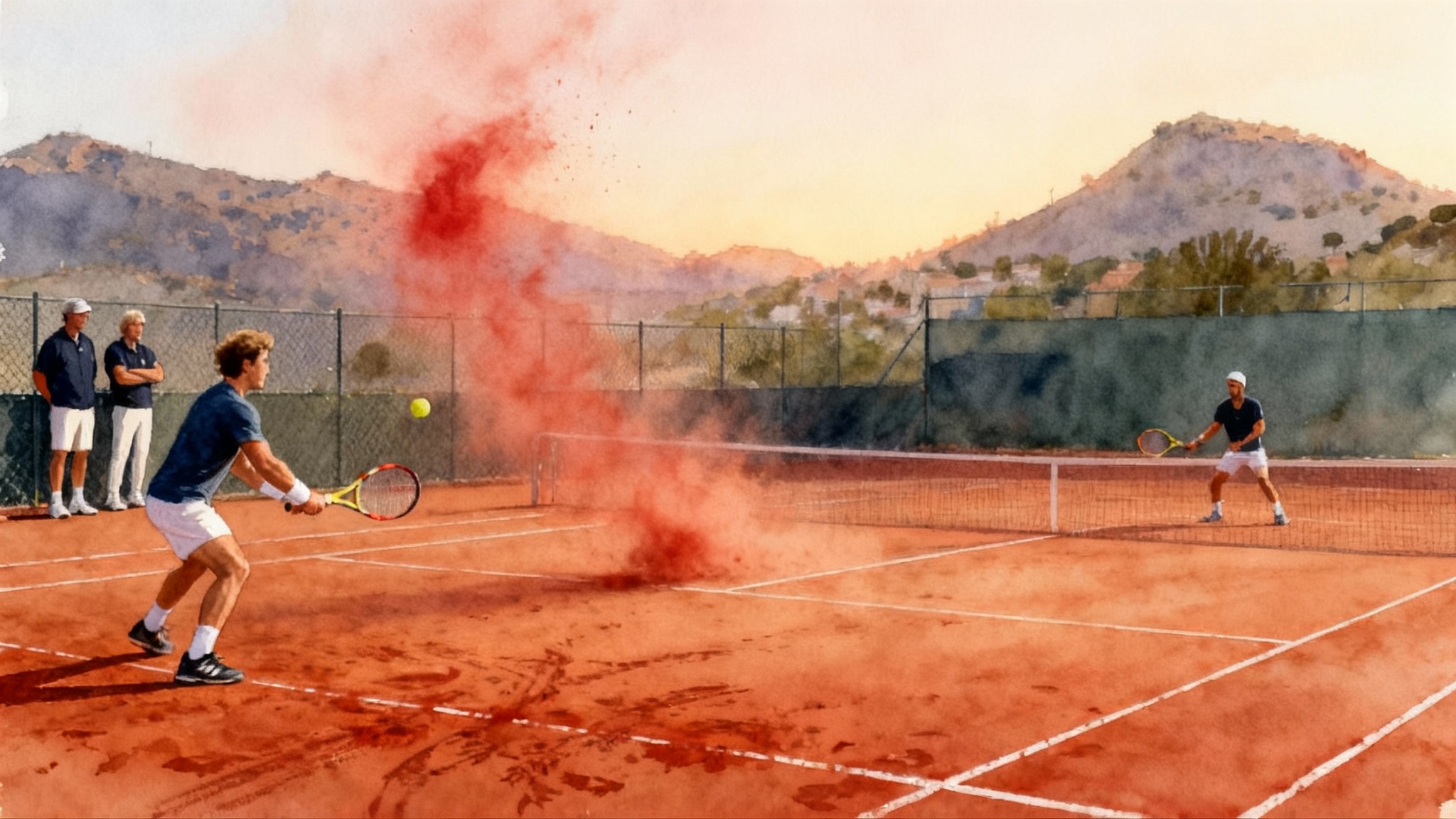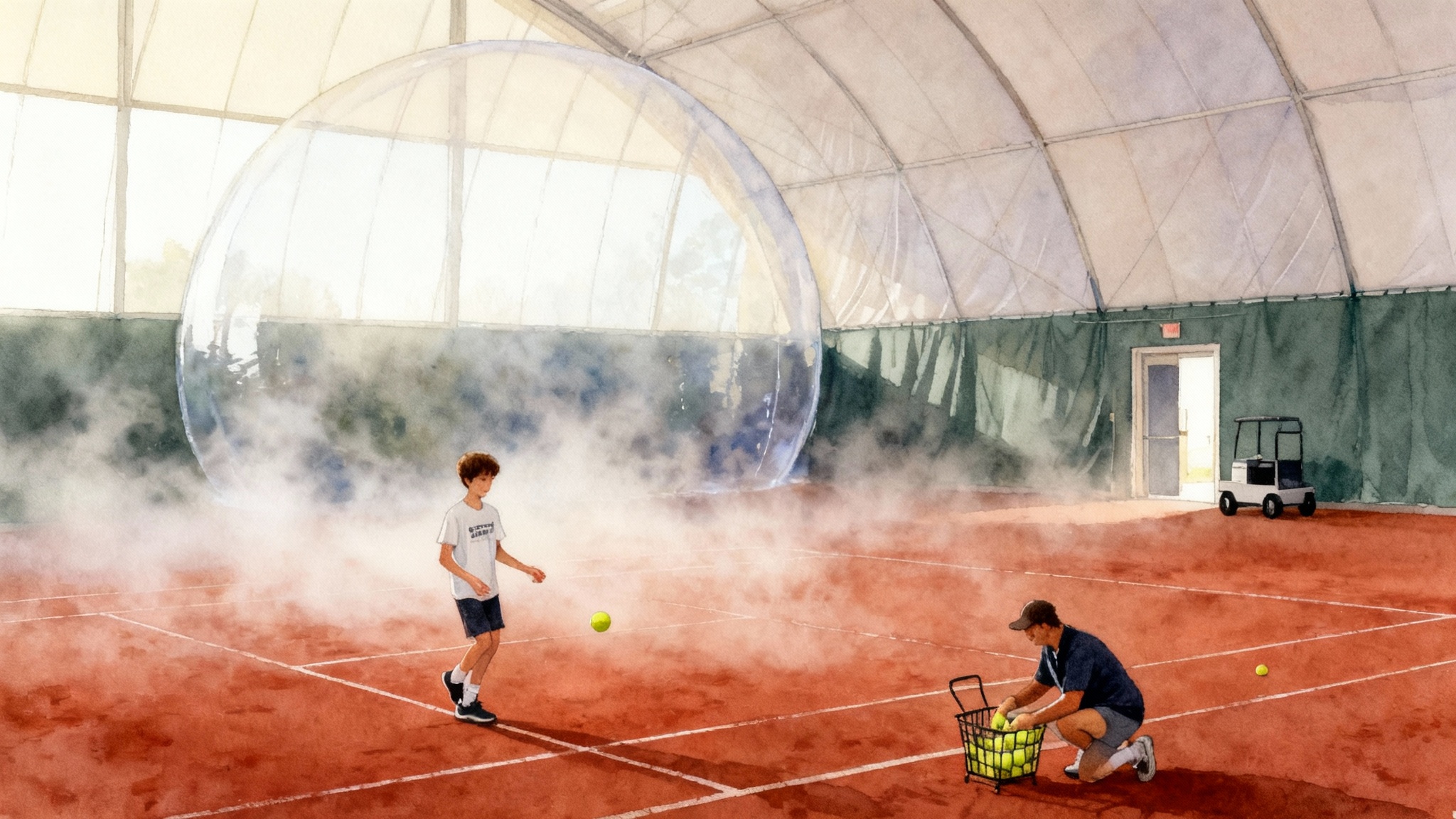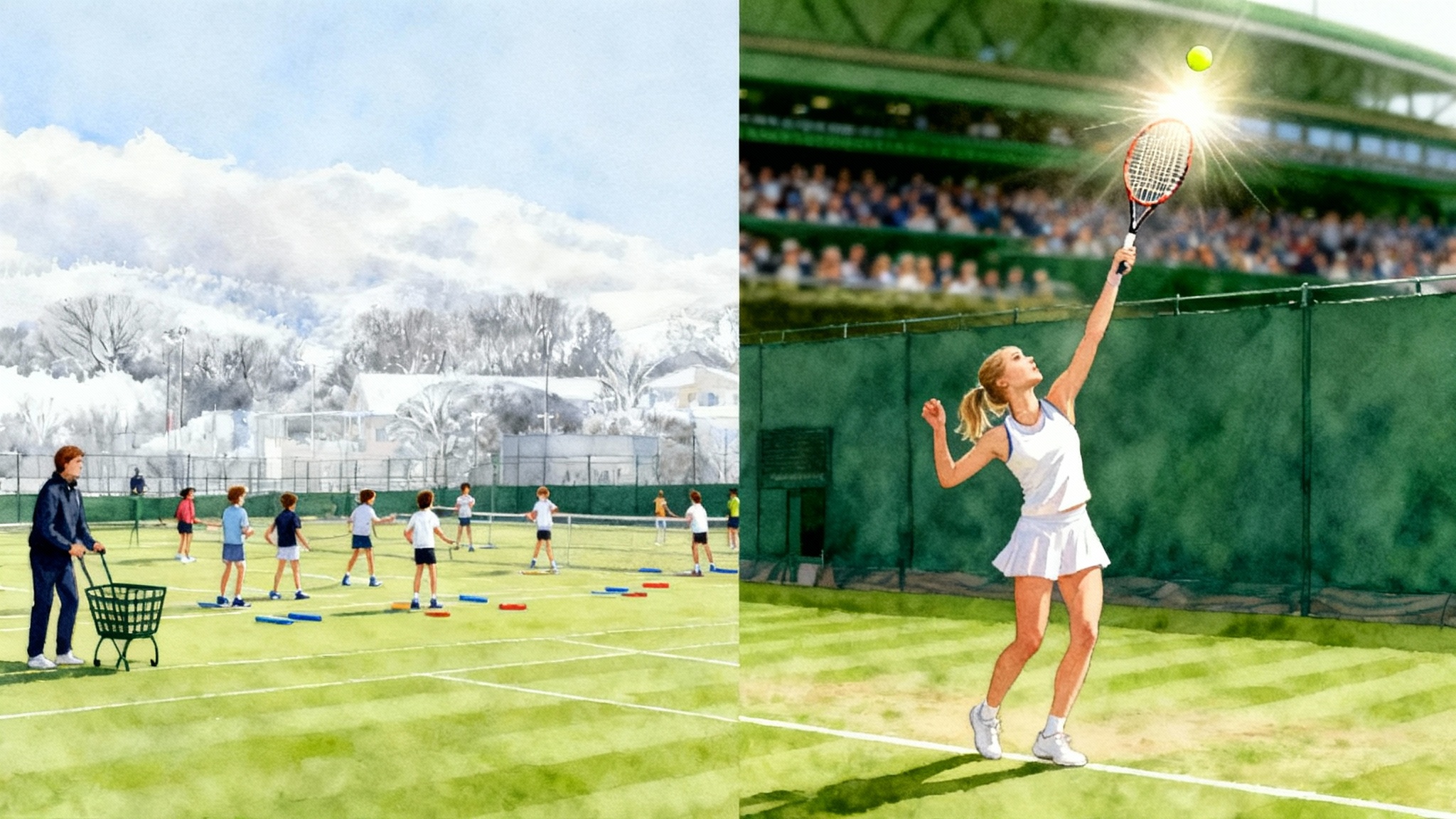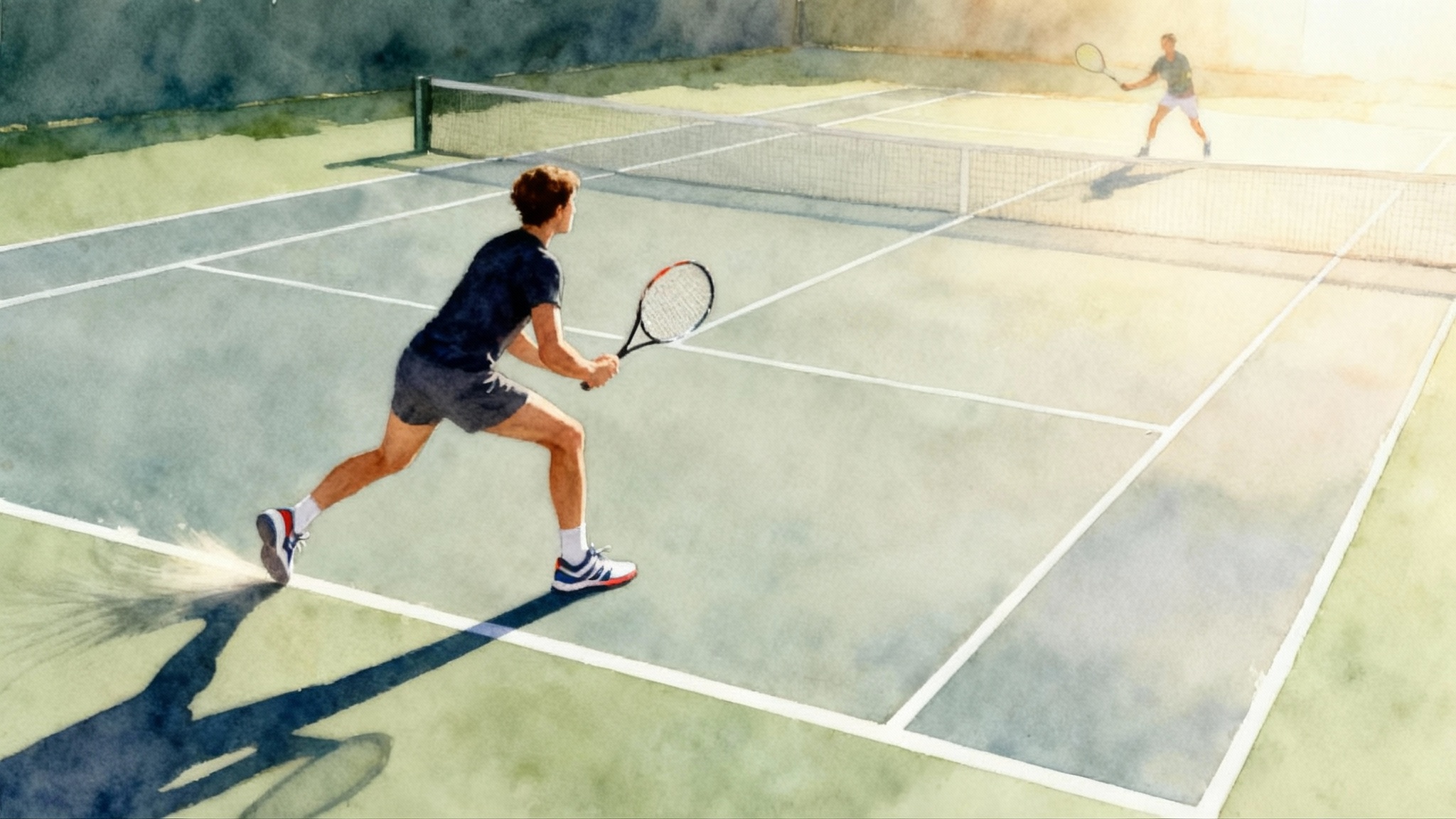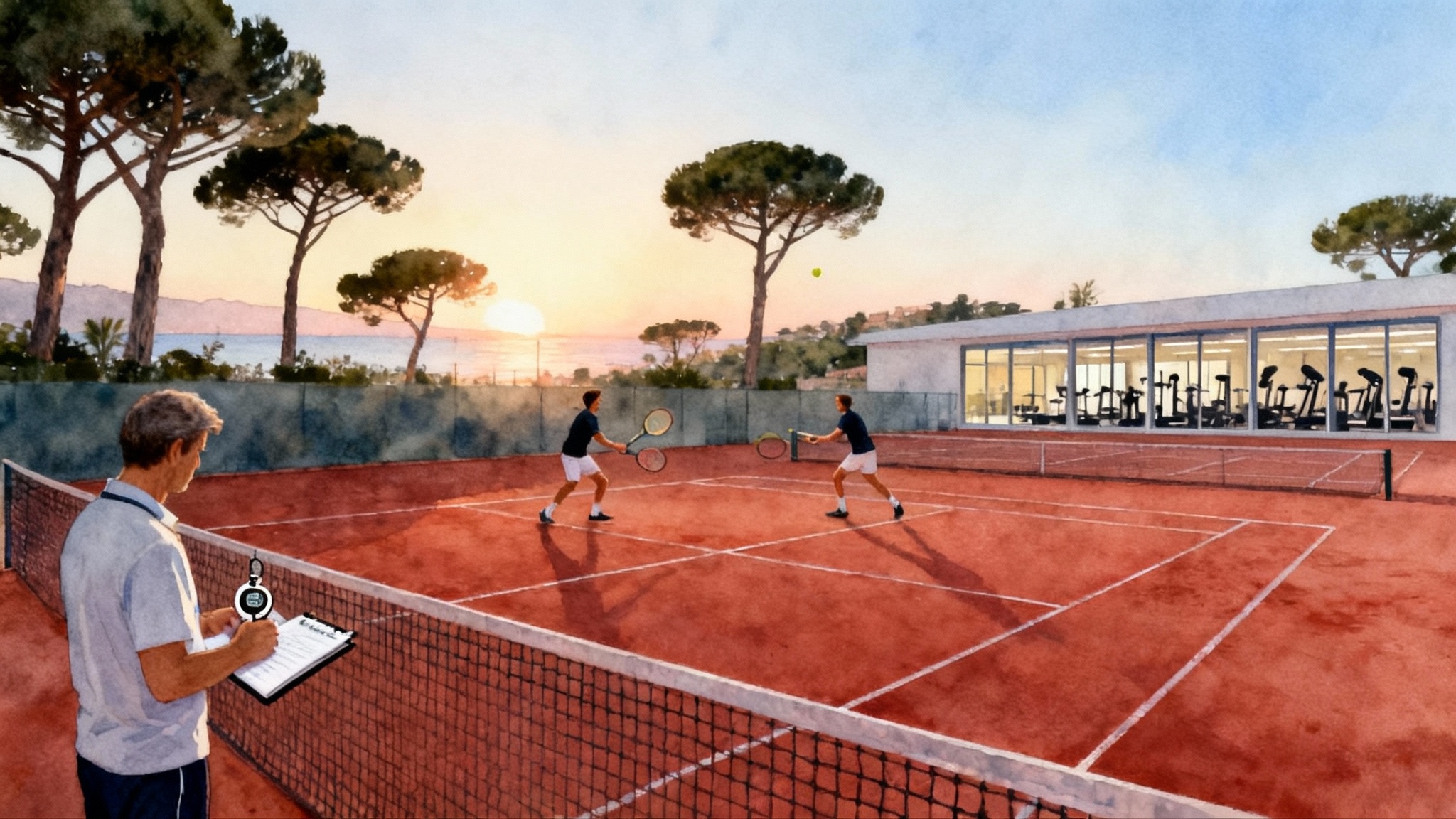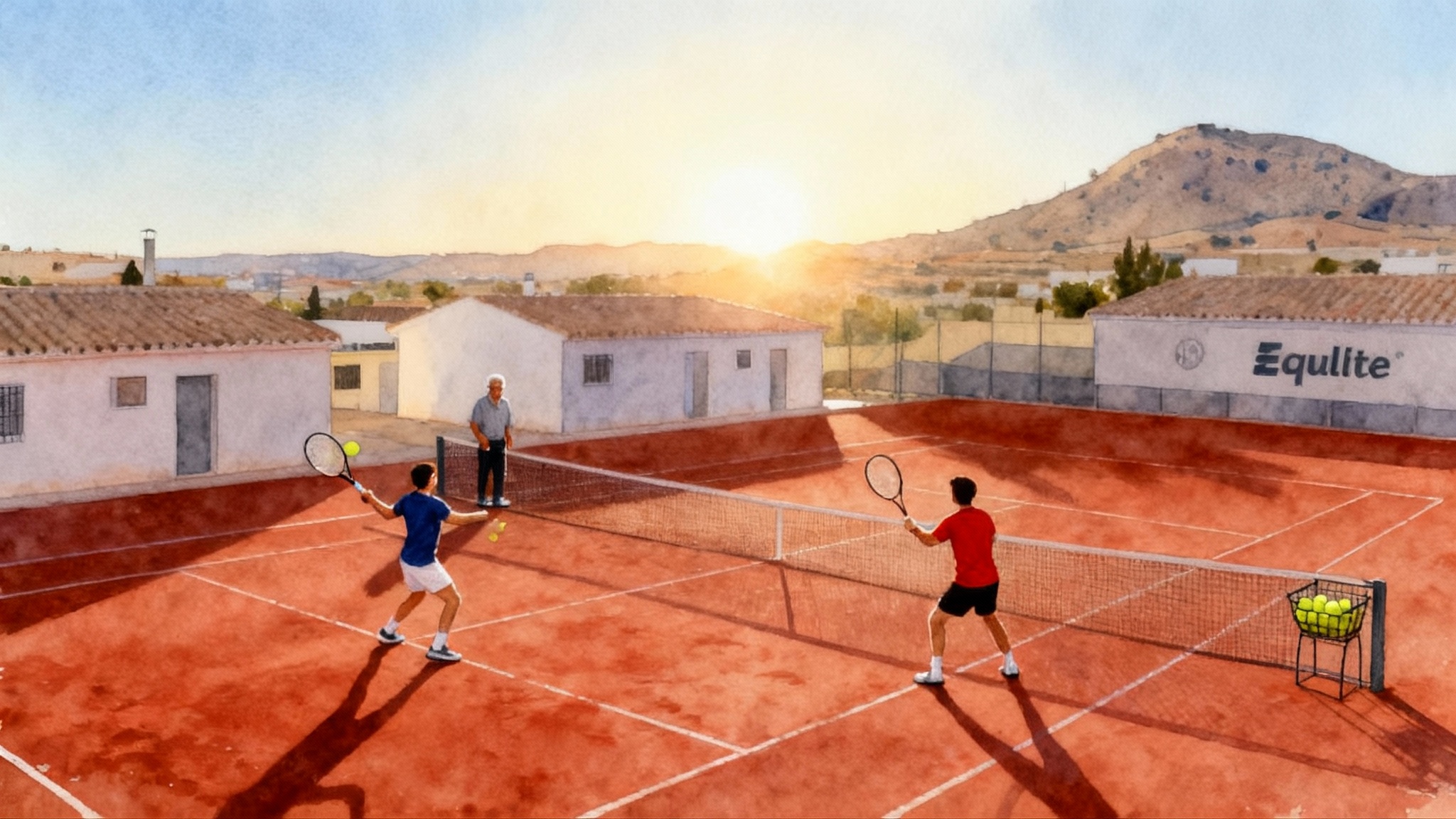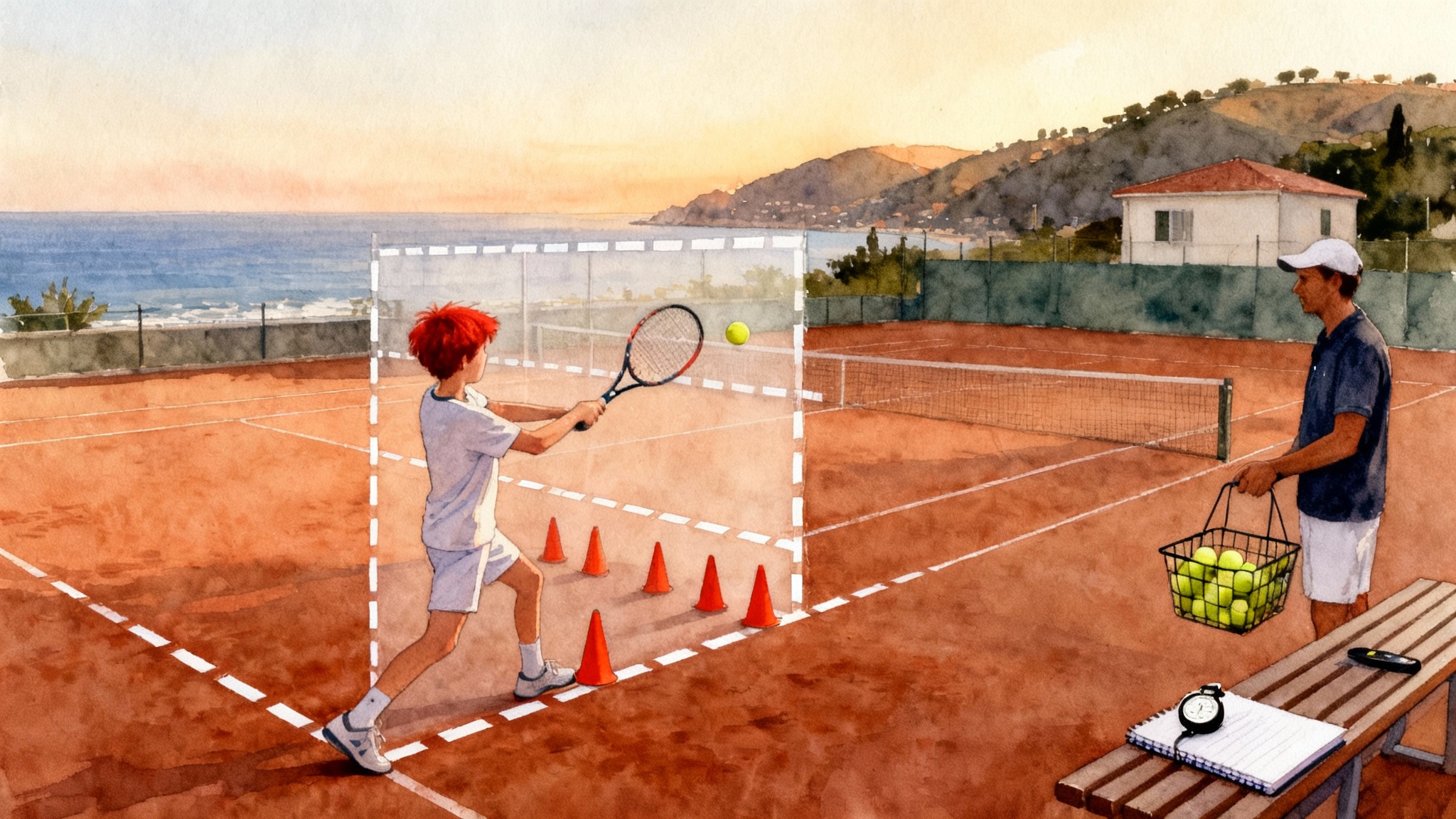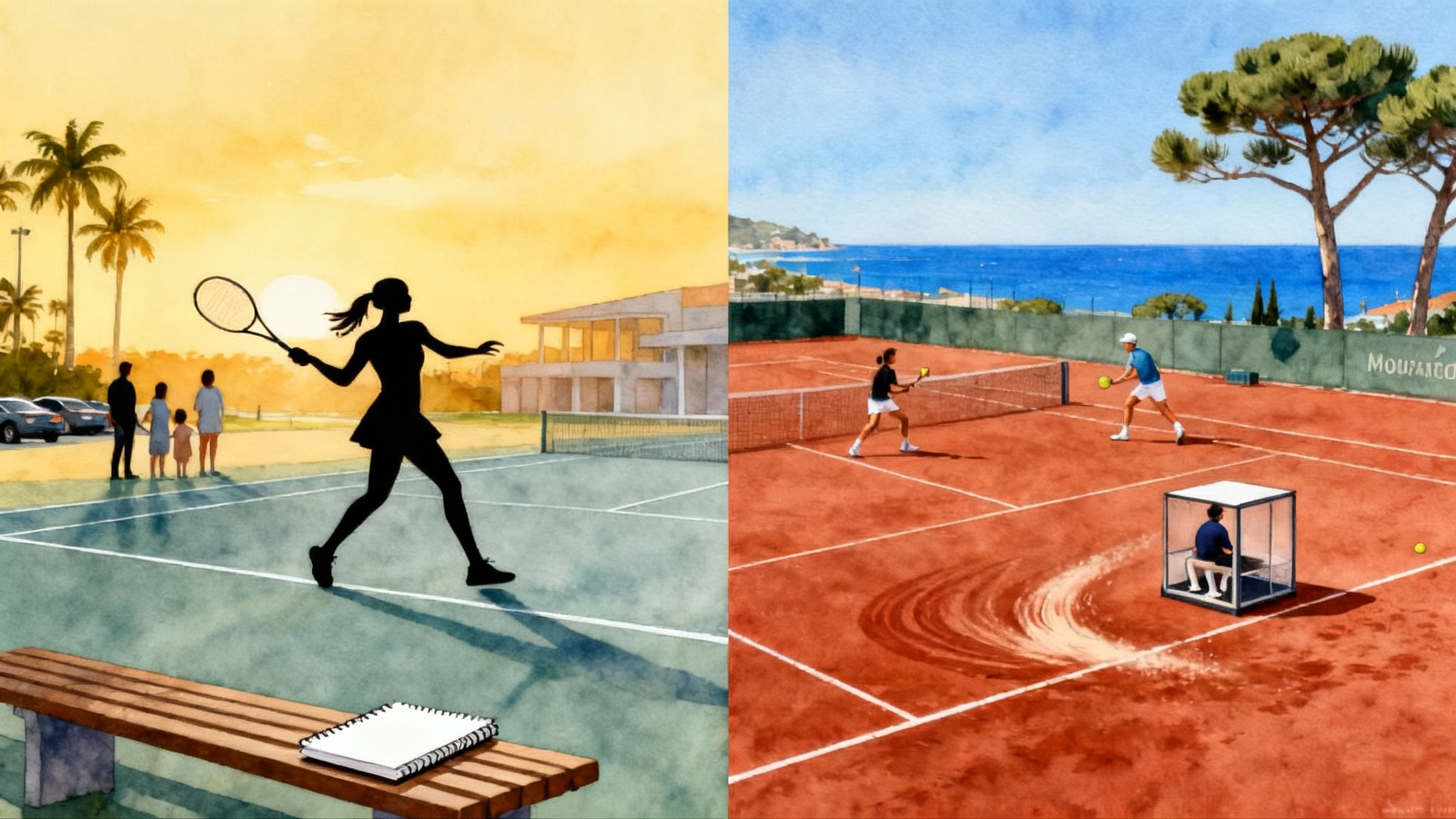Tolyatti to Trnava: EMPIRE Tennis and Kasatkina’s All-Court Rise
In 2015, Daria Kasatkina left Tolyatti for EMPIRE Tennis Academy in Trnava and found the clay-heavy, video-led, low-distraction base that sharpened her variety. Here is how that move, and the choices that followed, built an all-court contender.
The 2015 decision: leaving Tolyatti for a purpose-built launchpad
In the autumn of 2015, Daria Kasatkina made a choice that many juniors and their families quietly consider and often postpone. She left her hometown of Tolyatti and relocated to Trnava, Slovakia, to base at EMPIRE Tennis Academy with head coach Vladimír Pláteník. It was not a glamorous move to a coastal tennis hotbed. It was an intentional shift toward a small city that offered a simple, controlled environment and a daily rhythm built for skill accumulation. For a quick primer, see our EMPIRE Tennis Academy overview.
Why did it matter? Because environments write habits. Trnava offered Kasatkina three practical ingredients most young pros rarely get in one place: clay-rich training that rewards point construction, fast feedback loops through video, and a calendar of on-site competition that reduces travel and decision fatigue. The academy was not an idea on paper. It was a tightly packed ecosystem of courts, coaches, conditioning, and tournaments. If you are looking for a case study in using an academy as a launchpad rather than a permanent home, her journey from 2015 onward offers a clear blueprint.
Early in the move, Pláteník and the academy staff aligned around the player’s identity. Kasatkina’s upside was variety and feel. She could change height, speed, angle, and spin within a rally. The goal was not to erase that identity, but to weaponize it with better patterns, more reliable first strikes, and stronger legs. Trnava’s slower courts and predictable practice windows gave her a lab where experiments could stick.
What Trnava gave her that big-city hubs often cannot
-
Clay-heavy daily work. Red clay forces a player to earn space. Points breathe longer. This is perfect for a junior with wrists as educated as Kasatkina’s. On clay you can learn to build with width before depth, to lift heavy to the backhand wing, and to hide a short drop behind a high looper. EMPIRE’s schedule leaned into that logic and created repetition without monotony.
-
Video-led coaching. Every pattern change had to be seen and felt, not just described. Side and rear camera angles made it easier to show cause and effect. A coach could freeze the frame at contact on a wide forehand and show how her right hip blocked rotation, or how a later ball toss under pressure flattened the serve more than intended. That clarity shortened the distance between idea and behavior. The academy made this process accessible, not theatrical, and that matters for juniors who learn best by seeing themselves.
-
On-site competition. Trnava hosts frequent events under the International Tennis Federation umbrella, including long-running women’s events that brought strong fields into the academy’s orbit. That translated to match play without long-haul flights or chaotic schedules. Fewer logistics meant more attention for training blocks and recovery. You could spend a week building a new serve pattern and then test it on Saturday without leaving town. For readers new to the academy, this compact ecosystem is described by the academy itself at EMPIRE Tennis Academy in Trnava.
-
Integrated fitness and medical support. Strength coaches and physios were not down the road. They were inside the daily circuit. That allowed progressive loading instead of random gym sessions. Mobility, trunk rotation strength, and acceleration mechanics improved in parallel with the on-court plan, not in competition with it.
-
A low-distraction base. Trnava is not going to pull a young pro into ten sponsor dinners a month. The small-city pace slows the movie down. For a 17-year-old in 2015, that meant attention could flow to the next drill, the next video clip, the next recovery block.
The skill architecture: how clay, film, and habits created an all-court player
Kasatkina’s game reads like a toolkit rather than a single hammer. The academy did not try to turn her into a server-blaster. It added scaffolding to the tools she already owned.
-
Width-before-depth patterns. On clay she practiced starting points with height to the backhand corner, bringing opponents off the center line, then using a short cross forehand to force a defensive slide. From there, she either finished with a forehand into the open court or revisited the same corner with a heavier, higher ball to draw short replies. The sequence taught her how to create space and then cash it.
-
Two-ball deception. Under Pláteník, countless reps combined a heavy, high roller with a disguised drop shot on the next swing. Video allowed the staff to check if the preparation for the drop shot actually matched the heavy roller. When both looked identical until the last split second, the pattern became a real weapon.
-
Inside-out serve plus one. On the serve side, the team layered a simple template. Serve wide to the backhand on the ad court, recover the middle, then lift crosscourt to pin the returner and open the line. On the deuce court, aim body, then use a firm backhand into the opposite corner. These were not radical inventions. They were clear, repeatable choices that matched her strengths.
-
Defensive neutralization to offense. Clay teaches patience, but the academy did not let defense become identity. A recurring drill required a deep, high neutral ball after a stretch defense, followed by an immediate court position reset and a proactive forehand. That sequence helped her stay dangerous even when stretched.
-
Footwork for variety. Variety needs legs. The academy’s conditioning staff prioritized lateral acceleration, hip stability, and deceleration quality so that her changes of spin and height did not bleed control. Med ball throws with rotation, resisted slides into balanced recovery, and scripted footwork ladders all mapped to the patterns she repeated on court.
The result was not instant. It was steady. By April 2017 she won her first Women’s Tennis Association title in Charleston on green clay, validation for a game that builds angles, manipulates height, and makes opponents uncomfortable on slower surfaces. The point construction she rehearsed in Trnava carried over to faster courts because the decision tree was clear.
Late 2017: the handover to Philippe Dehaes
In late 2017, Kasatkina moved from Pláteník to Philippe Dehaes. Coaching changes are often treated like dramatic plot twists. For a player with a strong identity, they are more like changing the lens on the same camera. Dehaes encouraged her to keep the variety but to frontload intent. That meant taking early position more often, trusting the forehand inside the baseline, and turning the drop shot from a bail-out into a statement.
Two things stood out in this period:
-
Creative constraints shaped habits. Training sets might start at 15 all with a rule that any rally ball landing within the inner tramline must be attacked down the line. Constraints shorten the thinking time and accelerate commitment.
-
Video briefs stayed crisp. Instead of long film sessions, Dehaes leaned on short clips that linked one choice to one outcome. For a player who processes the game by feel, this kind of film diet protects confidence while still guiding change.
The combination of a clay-built foundation and a more assertive posture produced a strong late 2017 through 2018 stretch that took her into the top ten for the first time in October 2018. The blueprint of building space, then taking it, was intact. The emphasis shifted toward taking it earlier.
Later team evolutions and what stayed constant
Coaching teams evolve. In the seasons after Dehaes, Kasatkina worked with other coaches and specialists, including time with Carlos Martinez. The faces changed, but two constants remained. First, every successful stretch honored her identity as a player who can redirect and disguise without losing court position. Second, the systems that worked almost always reassembled the Trnava triangle of clay craft, video feedback, and simple serve plus one patterns.
The long arc validated the early move. In 2022 she reached the Roland Garros semifinal, the deepest Grand Slam run of her career to date, and she returned to the upper tier of the Women’s Tennis Association rankings. For a concise overview of her career milestones, including that 2022 Paris result and her top ten breakthrough in 2018, see the Daria Kasatkina player profile.
A step-by-step timeline of pivotal choices
-
2015: Leaves Tolyatti for EMPIRE Tennis Academy in Trnava to work with head coach Vladimír Pláteník. Chooses a small-city base with clay-rich training, video feedback, and integrated fitness.
-
2016: Consolidation year. Builds stable patterns and fitness. Learns to use width to create depth on clay and carries those patterns to faster surfaces.
-
April 2017: Wins first Women’s Tennis Association title in Charleston. The clay sculpting shows up on green clay with angles and height changes.
-
Late 2017: Switches to Philippe Dehaes. Variety remains, intent increases. Film sessions become sharper, constraints drive aggression.
-
2018: Climbs into the top ten in October. The identity-first approach survives surface and schedule shifts.
-
2019 onward: Team evolves, including collaboration with Carlos Martinez and other specialists. The most successful periods continue to lean on the Trnava triangle of clay patterns, video feedback, and simple serve plus one choices.
-
2022: Reaches the Roland Garros semifinal. Variety plus conviction becomes a late-stage match weapon.
The lesson is not that one coach or one city is magic. It is that the right environment at the right time can build an engine that keeps running even as the driver’s seat changes hands.
Practical takeaways for parents and juniors
- When to change environments
-
The player’s game identity is clear, but the current base cannot serve it. If a player’s strengths are variety and feel, and the weekly plan is built around endless ball-bashing on slick indoor courts with no film review, the environment is misaligned. The cost is not only technical. It is motivational.
-
The player is always traveling to find the right conditions. If the athlete has to leave town to find clay or to get match reps, you are burning energy that should go to training and recovery. A change to a base with on-site competition can add months of quality work across a season.
-
The player’s support pieces live in different zip codes. If the coach, physio, and fitness staff cannot meet weekly, the player’s body becomes a group project with no owner. Look for a place where these people literally share hallways.
- Align coach philosophy with player identity
-
Ask the coach to describe the player’s identity in one sentence. If that sentence does not match what you see, keep looking. Identity is the starting line.
-
Request three patterns the coach plans to build in the first two months. Patterns reveal philosophy. A coach who says, “we will hit more winners” has not given you a plan. A coach who says, “we will build width with a heavy forehand to the ad corner and finish line or drop depending on depth” has shown you a roadmap.
-
Demand video in the loop. You do not need expensive tools. You need consistent angles, short clips, and a weekly cadence. The point is to close the gap between how a swing feels and how it looks under pressure.
- Use an academy as a launchpad, not a forever address
-
Establish a two-year plan with clear checkpoints. Identify the skills you expect to own by specific dates. For example: by Month 6, a reliable deuce-court body serve pattern. By Month 12, a repeatable short cross forehand from a neutral ball. By Month 18, a defensive neutralization ball that lands deep and high to the middle third.
-
Rotate surfaces with purpose. If you are clay-first, schedule targeted blocks on faster courts where you keep the same patterns but adjust contact point and spacing. The point is translation, not reinvention.
-
Keep the network portable. Build relationships with a hitting partner pool, a remote video analyst, and a trusted physio so that when you change base or coach you do not lose the core systems. The best players carry their process with them.
For parallel case studies on academy-driven development, compare Elena Rybakina’s Spartak club pathway and Mirra Andreeva’s academy blueprint.
Build your own Trnava: a weekly micro plan you can apply anywhere
-
Monday: Video baseline. Record 20 minutes of forehand and backhand from side and rear angles. Run a simple checklist: contact height, spacing at contact, recovery steps. Note one mechanical cue and one pattern cue for the week.
-
Tuesday: Width-before-depth block. Crosscourt heavy forehand to the ad corner for 15 minutes. Add the short cross option. Finish with ten points to 11 where you must use the pattern at least once per point.
-
Wednesday: Serve plus one. On the ad court, hit three wide serves followed by a forehand lift crosscourt. On the deuce court, three body serves followed by a backhand to the opposite corner. Record five minutes and review ball toss and first step after contact.
-
Thursday: Defensive neutralization. Feed wide. Player slides, sends a high, deep neutral ball to the center, recovers fast, then chooses either a drop shot or a firm forehand to the open court. Track depth with cones in the last two meters.
-
Friday: Match rehearsal. Play a practice set with one constraint. For example, after any short ball, you must decide and commit within two steps. The goal is to cut indecision, not to add winners.
-
Saturday: Competition or pressure games. If you have a local tournament, enter it. If not, play tiebreakers with a scoring tax. Miss long on the first ball and give the opponent two points. Constraints raise focus.
-
Sunday: Recovery and film. Light mobility, ten minutes of slow leg cycles on a bike, then a fifteen-minute film review. Capture one clip that illustrates the weekly cue. Build a library. The library is the real coach that follows you to the next city.
This micro plan is simple on purpose. Simplicity keeps you honest and repeatable. It reflects what worked for Kasatkina in a more sophisticated form inside EMPIRE’s ecosystem.
What parents and juniors can copy from Kasatkina’s arc
-
Choose a base that matches the game you want to own, not the brand you want to wear.
-
Use clay to teach patience, angles, and height control. Then translate those patterns to hard courts by adjusting contact point and court position, not by changing identity.
-
Treat video as a weekly habit, not a special event. Keep clips short and the feedback specific.
-
Align coach language with player identity. Ask for patterns, not slogans.
-
Plan checkpoints. Skills without dates tend to drift.
-
When it is time to change coaches, protect the system. Carry your library of clips, your pattern notes, and your language. The right coach will tune those, not erase them.
Conclusion: a small city, a clear identity, and a portable process
From Tolyatti to Trnava, the most important choice was not the passport stamp. It was the decision to build a process that matched a player’s identity. EMPIRE Tennis Academy provided clay, film, and structure at the exact moment a talented junior needed repetitions without noise. The later shifts, from the 2017 handover to Philippe Dehaes to subsequent team evolutions, worked best when they respected that early architecture. The lesson for families is clear. Choose environments that let the player’s strengths compound. Use an academy as a launchpad. Make the process portable. The map changes, but the compass stays the same.
